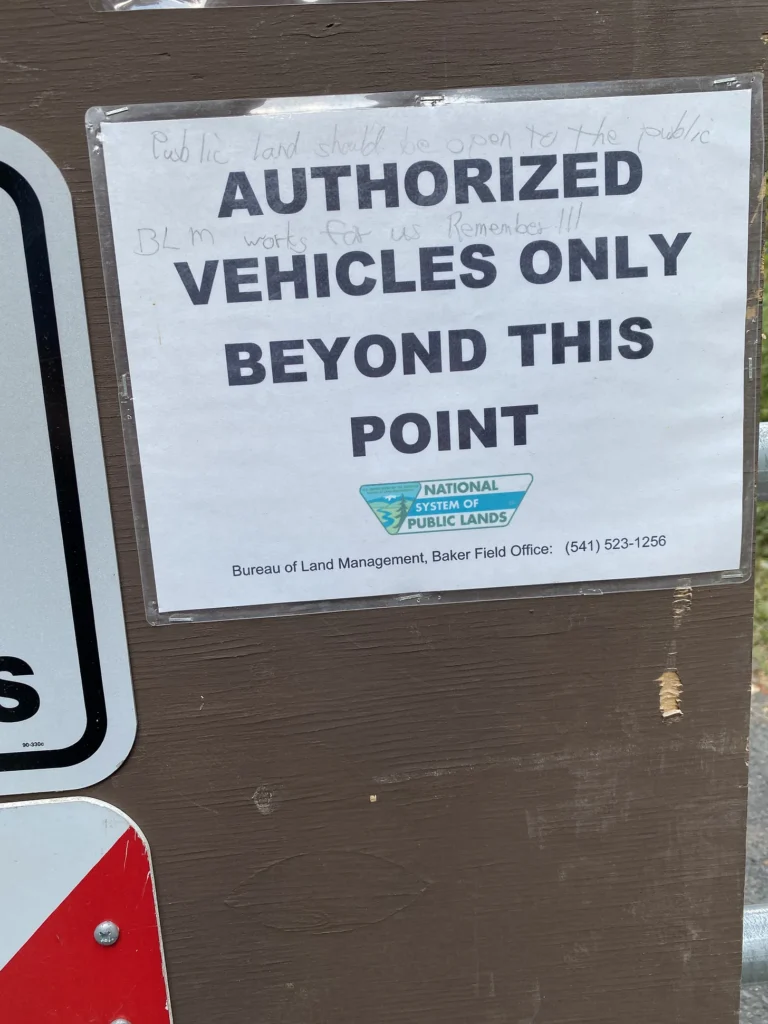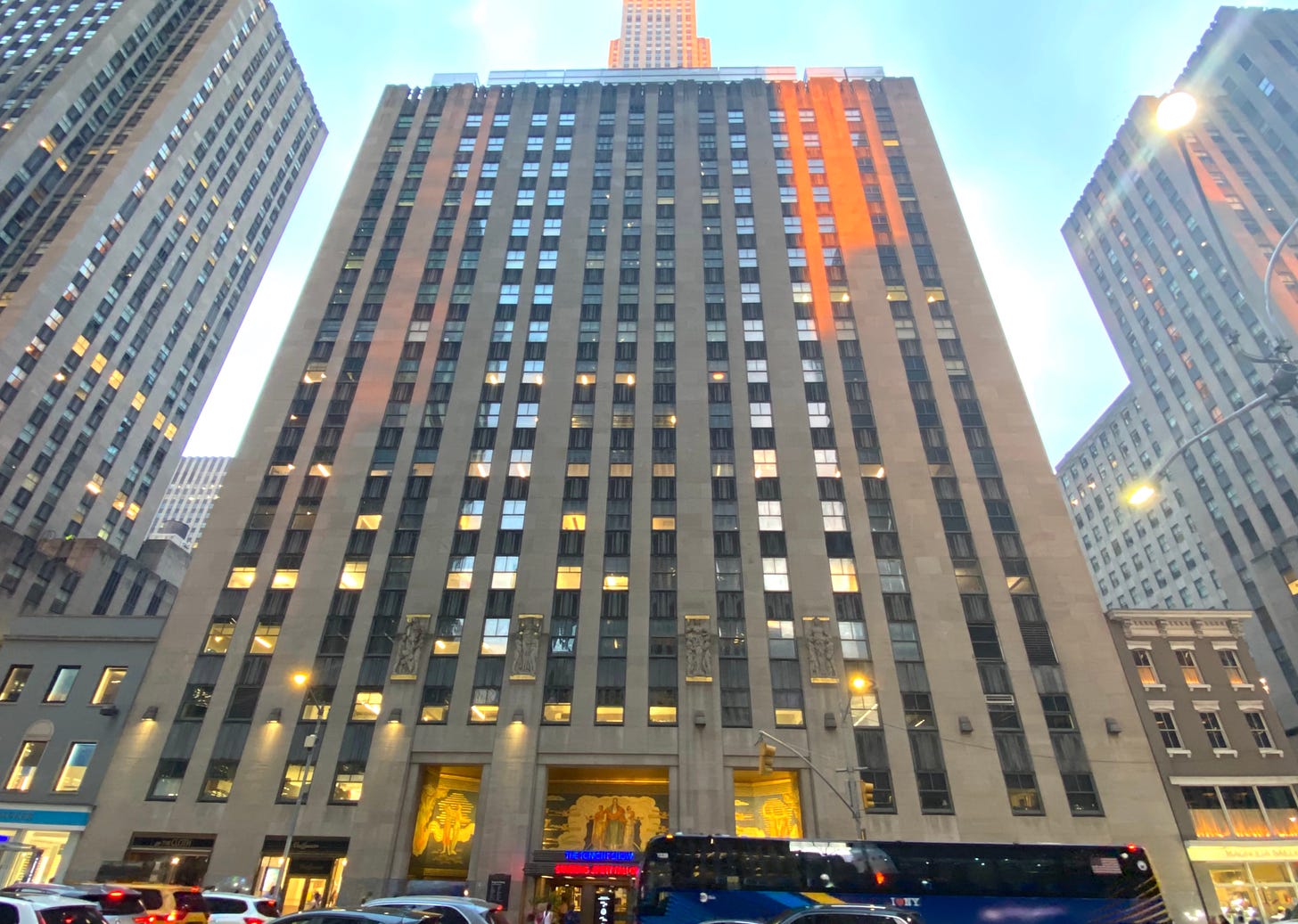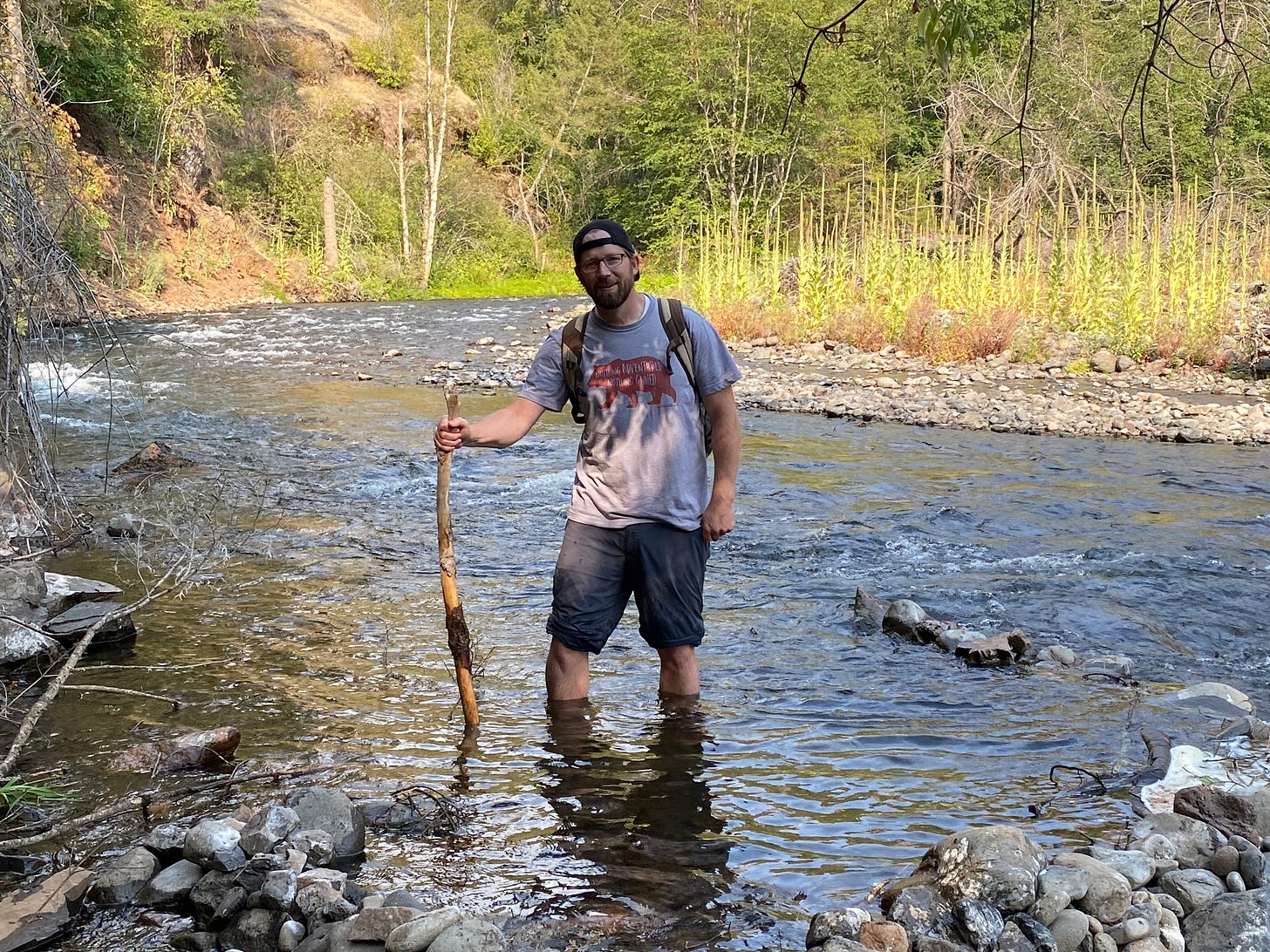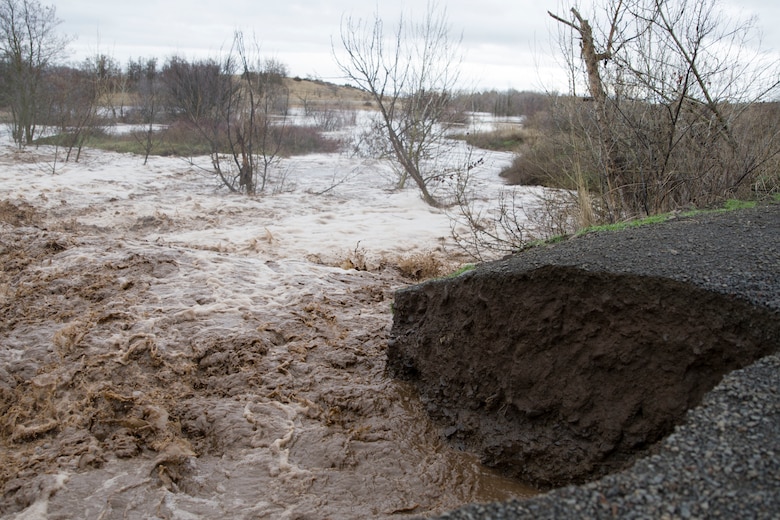Who will build the roads?
Instead of building roads, the Bureau of Land Management is indefinitely blocking homeowners from accessing their homes in Oregon
Ben Burr Substack
Anthropogenic Disturbances
On June 13, 2022, Yellowstone National Park announced emergency flooding had washed out the road to the North Entrance of the park. This flood event forced the closure of the National Park at the onset of the peak tourist season. Flooding was so severe, park visitors were evacuated, portions of the park remained closed for weeks, and the tourism economy of nearby Gardiner, MT tanked. Reasonable people likely wondered if this road would ever be rebuilt.
Count me among the skeptics, because the back window of my home faces the Kolob Canyon portion of Zion National Park, and during a substantial time that I have lived in New Harmony, UT, Kolob Canyon was closed. The National Park Service needed to perform maintenance on the road and improve some of the facilities. The original announcement indicated the closure would last 7 months. It took two years.
I was discussing this extended closure with my friends in the Iron County Commission, and they said the local governments were willing to offer in-kind use of heavy machinery and county road maintenance personnel to speed things along and lower costs, but the Park Service wasn’t having it.
You can imagine my surprise if we fast forward to October 30, 2022, and the National Park Service announced that the Yellowstone Park’s North Entrance and road to Mammoth Hot Springs had been fully reopened after a frenzied summer of reconstruction. In 4.5 months, they had fully rebuilt the road.
That this road was reconstructed so quickly is so improbable, it is entirely possible that someone broke the law. I’m serious. In America, in 2022, one does not simply go and reconstruct a road that has been completely washed away by an erosion event. While I count myself among those who are pleased that the road was reconstructed so quickly, I also want to know who is going to jail over this.
While I haven’t taken a deep dive into the administrative record of this reconstruction project, I have read the public record of the project. It seems as though most of the work was being performed under emergency administrative authorities. I didn’t see any record of a solicitation for public comment that would accompany formal environmental review.
Most shocking of all?
There were no opportunistic lawsuits or legal threats from wilderness groups. Even though we’re talking about one of the crown jewels of the National Park System. Yellowstone has some of the highest concentration of grizzly bear populations in the United States, yet the same groups who are suing the Fish and Wildlife Service for failing to protect grizzly bears from roads in the Flathead National Forest are noticeably absent in Yellowstone. In their lawsuit against the USFS, they claim that even decommissioned roads that are no longer used are a bigger threat to grizzly bears than the destruction of grizzly bear habitat. One can only imagine the impact that a major highway that provides millions of tourists access to an entrance of one of the world’s most popular national parks would have on the grizzlies.
So why would wilderness groups sue one federal agency because closing and decommissioning rarely used roads doesn’t do enough to protect grizzly bears from roads, but they won’t stop a major highway from being reconstructed through a grizzly bear sanctuary? The world is full of mysteries.

It is also full of roads. And roads are often damaged by erosion events. Fortunately, rebuilding roads doesn’t have to be mysterious. All you need is straightforward engineering, a slush fund of emergency spending money, and raw, unfettered, vicious political will of the type that makes the Iron Throne look like a Super Potty Trainer. Whoever the project manager was for the Yellowstone road rebuild, you’re the hero this country needs.
If you’re looking for the next great challenge to deploy your superhero powers, I suggest you find your way to Milton Freewater, Oregon and the South Fork of the Walla Walla River.
As the Policy Director for the BlueRibbon Coalition – a non-profit that fights against road closures on public land – I was contacted in September of 2020 by a group of property owners from Milton Freewater looking for help with a problem they were running into with the local office of the Bureau of Land Management.
Earlier that year, the South Fork of the Walla Walla had experienced significant flooding. Portions of an access road that had been used for decades by the property owners to access their cabins up the canyon had been washed away. A single-track trail used by hikers, equestrians and dirt bikes, had also been damaged in places. The BLM was now using the damage to the roads and the trail to deny access to these cabins – their homes.
When I left a promising career in Washington D.C. to be trained in the unglamorous arts of public land consulting, this was exactly the kind of case that drew me to this field of work. Here we had a small group of Americans with property rights both unalienable and endowed by their creator and protected by the U.S. Constitution coming up against a blinkered and capricious group of land managers who were cutting them off from their homes, their heritage, and a historic public road that provided private property access and recreation access to the public.
The first step, and this is always the first step in a fight like this, is to set the record straight while trying to understand the situation from as many different perspectives as possible. Here are some relevant facts that I gleaned from hours of phone calls, extensive review of a box full of records, and personal onsite visits to the area.
- The property currently owned and managed by the BLM was once partially owned by Boise Cascade as part of their portfolio of logging properties. Boise Cascade had built the road along with several bridges over the river that were engineered to withstand traffic from the heavy traffic of logging trucks. Boise Cascade had a Right of Way to access this road.
- The road has always been the primary access for the cabin owners and the only access for motorized vehicles into the canyon since 1906 when the properties were originally homesteaded.
- A portion of the road has always required water crossings of the South Fork Walla Walla River.
- In the early 1990s the BLM acquired the property owned by Boise Cascade. Shortly thereafter they designated the acquired property an Area of Critical Environmental Concern – which is a management designation made by unelected local BLM managers to require preference for environmental protection in management. It should be noted that an ACEC doesn’t carry the weight of a Congressionally designated wilderness area, and it doesn’t require a prohibition of access to motorized use.
- Prior to the designation of the ACEC the landowners used the road freely like anyone would to come and go from their own homes. Members of the public would also use the road to explore the canyon, camp, and engage in various forms of recreation. After the designation of the ACEC, gates were installed, with locks, and the property owners were only allowed to access their properties for certain months of the year determined by the BLM. (Now is the time constitutional alarm bells should be going off)
- The reason for the restrictive management was because the neighboring Umatilla Tribe had big plans to restore salmon runs in the South Fork Walla Walla River as an exercise of their rights under treaty. The introduced salmon are protected species under several federal laws.
- For some reason, it was determined that the best way to manage the area for the values of the ACEC was for the BLM to systematically destroy and remove the bridges that had been constructed by Boise Cascade. As a result, the property owners had to make multiple river crossings. It should be noted that the SFWW River is deep and swift. River crossings are possible in capable 4WD vehicles, but they are not as convenient as bridges.
- Umatilla County owns a park and campsite at the trailhead, and they would prefer to see the BLM road and trail system open in order to draw outdoor recreation visits to the area.
- The single-track trail has a long been managed by the US Forest Service, which also owns property adjacent to the northeast boundaries of the cabin owners’ properties. This trail has been maintained by local volunteer groups through the expenditure of OHV grant funds. When BLM acquired the property, they required the USFS to get a ROW for the single-track trail. The two agencies haven’t worked well together in this area.
- The 2020 flood event did in fact damage the road and the single-track trail, and the property owners tried to work with the BLM to get them to repair the road and the trail – but most importantly, the road.
- The BLM agreed to allow them to maintain the road. Conflicting records suggest they were only permitted to do maintenance with hand tools. The District Manager did give permission to use “tracked vehicles,” and this manager is no longer serving in this capacity.
- This road maintenance was controversial to the BLM, and this controversy is consistent with BLM behavior when the agency is trying to dispossess property rights holders from their property. This is the pattern: Initiate an enforcement action or restriction that puts property owners in an impossible situation, send conflicting messages about how to resolve the situation, property owners will usually default to responding to the message that best serves their interest, this is a trap, however, that now puts them in an unavoidable adversarial position with the agency, now the agency can proceed forward with additional enforcement actions or restrictions and the property owners will be labeled as uncompliant dissidents. This pattern of gaslighting is evident in every significant public land related conflagration that you’ve heard about in the news.
- At the end of the day, the road was repaired to the point that it has been and is currently passable for 4WD vehicles to get to the property just as they did prior to the flood event. In the fall of 2020, BLM did grant emergency authorization to the property owners to travel on the road to the cabins and perform necessary winterization maintenance.
- That was the last time the property owners have been allowed to access their properties with motorized vehicles.
- Even though the road is as passable as it was prior to the flood, the BLM is refusing to allow the property owners to use the road, and they will not give them a key to unlock the gate.
- The stated reason for the persistent denial of access is that vehicular travel will threaten the salmon in the river and potentially the bull trout. Prior to the flood event, motorized access wasn’t recognized as causing enough damage to the fish to require permanent denial of access. BLM has not been able to identify why or how the flood event changed the impact to the fish.
- The Umatilla Tribe has spent millions of dollars building a salmon hatchery two miles below the ACEC area, but the released populations have struggled to survive for various reasons that have nothing to do with the occasional 4WD vehicle crossing the river. While the property owners have been chastised for performing minor maintenance to the road and using vehicles to cross the river, the Umatilla Tribe has been allowed to completely change the path of the river using heavy machinery.
- The bull trout have not been observed in the lower part of the river where the vehicle crossings are, because the river isn’t cold enough in the lower elevations.
- The property owners have worked with county government leaders, congressional staff, and anyone else who will listen to try to resolve this situation. The BLM is dug in on their position that the property owners will never be able to use their primary road to their properties ever again.
- Those who want to protect fish claim that vehicle crossing could cause direct mortality to the fish, could cause mortality to eggs, or could cause sedimentation from river-bed disturbance that would threaten the fish. There is no evidence that this occurred in the years prior to the flood event, and no evidence to suggest that using the road after the flood event would cause significantly more impact than before.
After reading this list of bullet points, one thing is clear: This is complicated. But it shouldn’t be. And this unnecessary complication of simple conflicts is the critical flaw of our public land system in America. Indeed, the BLM’s own manual of operations points the way forward. BLM Manual Section 2800 at .06 (D) states:
It is the policy of the BLM to allow owners of non-Federal lands surrounded by public land managed under FLPMA a degree of access across public land which will provide for reasonable use and enjoyment of the non-Federal land.
…such access must conform to rules and regulations governing the administration of the Public land; keep in mind, however, that the access necessary for the reasonable use and enjoyment of the non-Federal land cannot be denied.
Access necessary for the reasonable use and enjoyment of the non-Federal land cannot be denied. It seems pretty clear. It seems pretty simple.
Even though the way forward seems simple, it has to be said that this case probably isn’t about roads, or erosion, or fish, or BLM Manual Section 2800. The American public land system has always been complicated by the Fifth Amendment to the U.S. Constitution which states quite clearly that “No person shall be deprived of life, liberty, or property without due process of law; nor shall private property be taken for public use without just compensation.” Since the creation of the first national parks to the era following the passage of the Federal Land Management and Policy Act in 1976, the question of how to deal with private property inholdings has lurked violently in the background as the federal government has thrown its weight into dispossessing private property owners of their property with due process statutes called the National Environmental Protection Act (NEPA) and the Administrative Procedures Act. Rarely is there anything resembling just compensation. It’s hard to overstate the horror that the federal government is capable of inflicting on individual citizens when it decides it wants to possess what rightfully belongs to its citizens.
A few weeks ago, I was invited to be a guest on the Glenn Beck radio show to discuss public land issues. During the interview Glenn shared a story from his time in New York City that I had never heard. The 1920s was a time of dramatic change for the New York skyline as skyscrapers became the quintessential symbol of American progress. The skyscrapers of New York weren’t built on virgin land. Like all cities, New York has been in a constant state of building and rebuilding itself. When John D. Rockefeller, Jr. envisioned the plan for 30 Rock Plaza, part of the plan required buying out or waiting out the leases of 203 city lots. Then they would have to raze 208 existing buildings. At the time, the Rockefellers were the wealthiest family on the planet, so buy out the leases they did.
Well, most of them.

There were two property owners who refused to sell. In the heart of the plaza that consists of 14 towering skyscrapers, to this day you still have two 3 story 19th century buildings flanking 30 Rockefeller Center on either side. They built the skyscrapers around these buildings. The skyscrapers soon became home to powerful media empires. Yet the combined power of the richest family on the planet, global media empires, and a city notoriously run by ruthless political machines, the Fifth Amendment gave the owner of an Irish pub (which functioned as an illegal speakeasy during prohibition) the legal protections to withstand what must have been tectonic forces of dispossession.
Going up against the federal government is a completely different ball game. For all the wealth of the Rockefellers, the one thing they didn’t have was sovereign immunity against a private cause of action in court. With their deep pockets, the wealthiest family on the planet has a lot to lose if they pick the wrong fight with the wrong little guy. So they decided to cut their losses and build their empire around Hurley’s Pub instead of taking it through brute force.
If we fast forward to the present day, and the Rockefellers were to hire me as a consultant to dispossess the owners of Hurley’s Pub from their little building, I would weaponize the federal government against them. I would start by petitioning the Fish and Wildlife Service to list the Norway rat as an endangered species under the Endangered Species Act. Once the rats are protected under the Act, it would be illegal for pub owners to exterminate the rats or do anything that might degrade the habitat of the rats. As rats infest the city, I would weaponize the health department to crack down on unsanitary conditions inside things like Irish Pubs. Imagine an army of health department inspectors in hazmat suits shining black lights in the back kitchens of the pubs and finding evidence of rat urine everywhere they look. Then come the fines, and the shutdown orders, and the crucifixion in the press.
The next phase is what we call the shoot, shovel, and shut-up phase as the pub owners start killing the rats despite the rigid legal protections. This last burst of defiance will be met with the development of a massive eco-surveillance state where rats are captured and collared with tracking devices and mini-body cams. Eventually rat deaths would be documented, and the first pub owner to illegally kill a rat would be made into a public example through an aggressive federal prosecution. If you’re not imagining militarized agents in SWAT gear raiding the apartment of a pub owner in the middle of the night and dragging him out into the street in front of rows of cameras, then you’re not catching the vision.
An ecosystem of non-profits funded by people like the Rockefellers to give them a break from their taxes would emerge to create a legal firewall of protection around the beleaguered Norway rat. New York would be flooded with stuffed animals, T-shirts, cartoon series on Netflix, etc. The mission: Acclimate humans to peacefully co-exist with one of the keystone species of New York’s dwindling biosphere. As restaurants go out of business, they will be replaced by a new hospitality industry that would sell delectable treats to tourists to feed the rats.
As New York transforms into Zootopia, our Irish Pub owners will likely be out of money, out of business, and actually lucky if they’re out of jail. Not only will they sell, but they will sell for pennies on the dollar – and they will do so with willing desperation.
I’m sorry, but there isn’t a benign way to support the public land system without also supporting the violent dispossession of property that is required to satiate the endless appetite for more public land that is under federal control. While public land does provide some public benefits, one of the biggest blind spots I consistently find among those who blindly celebrate the virtues of public land is that the system is substantially underwritten by violence, abuse of power, and erosion of fundamental property rights. While it is possible to support the benefits that come from public land, having a public land system also comes with the burden of challenging the injustices that it inevitably creates.
Because the Fifth Amendment provides serious protections to private property owners and acquiring the property through just compensation is complicated and expensive, the path of least resistance is to weaponize the litany of environmental laws to create a regulatory environment that makes it impossible for property owners to access, use, and enjoy their property.
In the case of the SFWW property owners, we are looking at what is likely an unconstitutional regulatory taking of private property. The cabins, like any home in the rugged backcountry of the Pacific Northwest, require maintenance and care by their owners. Without access for vehicles, the property owners are unable to perform basic tasks like winterization, pest control (no Norway rats will be harmed), or prevent vandalism. Some of the property owners are disabled and have been unable to visit their cabins for years.
The property owners and users of the South Fork Walla Walla drainage aren’t asking for a highway to be rebuilt in four months (a monumental task that our government is evidently capable of). They want something more difficult to accomplish.
They need entrenched decision-makers in a dysfunctional bureaucracy to make a better decision, which is actually a conflict of biblical proportions. For those familiar with the story of Moses, marshaling the resources of the pharaoh to build pyramids was easier than getting the pharaoh to change his mind. Squandering the resources of the state is always politically easier than reimagining the political order.

But, if the current political order leads to the outcome that the full might and force of the federal government can be marshaled to prevent a handful of citizens from driving to their homes, then we have a political order that needs to be reimagined. I have done the legwork, quite literally, to be able to share an honest assessment of the situation. I hiked up the canyon, which included several river crossings on foot. I can personally testify that if you think a 4WD vehicle can run over a fish in this river, then you don’t understand physics, you don’t understand rivers, and you don’t understand fish. You have no business working in any profession that is even remotely connected to “fish management.” If you think allowing these property owners to drive back and forth from their cabins will cause irreparable harm to fish, then I’m calling out what you’re doing. You are using the fish as a political cudgel to implement a policy outcome that is immoral, unscientific, arbitrary, capricious, and wrong. A sane society wouldn’t let you anywhere near political power.
The road is usable. The simple solution is to give the property owners a key to the gate and let them have administrative access to the road that accesses their homes – just as they always have. A more broad and equally simple solution would be to remove the ACEC designation from the area and manage it as a multiple use recreation area, where the economic benefits of recreation can be reinvested into improving the ecological health of the river. The public wants healthy fish populations. The public also wants spectacular public land recreation experiences. The South Fork Walla Walla River can support both outcomes. If we will let it.
You can share your support for the South Fork Walla Walla property owners by sending feedback to the BLM using this form: https://www.congressweb.com/BRC/85
Support Blue Ribbon Coalition Here
Subscribe to RANGE magazine
Call 1-800-RANGE-4-U
You may also like
-
Electric Vehicles: A pipe dream for tyrants
-
Fed plan would kill 500,000 barred owls to “recover” spotted owls
-
BLM resource management plans stymie Western states’ energy development
-
Omnibus bill provision would “unleash” electronic tracking on nation’s cattle
-
Arizona rancher sues to stop million-acre national monument


